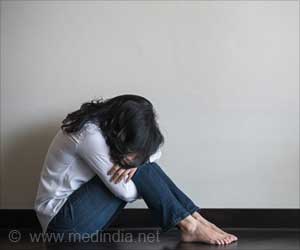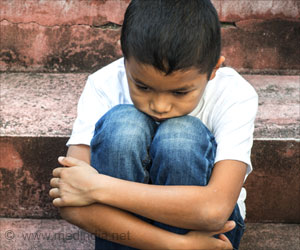San Francisco authorities are seeking to sweep homeless from the streets and parks at a time when health officials are proposing to scale down psychiatric treatment facilities in public hospitals.
They are cracking down on the homeless, many of them mentally ill, seeking to camp on public places like parks following complaints from the better off.
At the same time psychiatric wards are being closed down in public hospitals. That is a situation tailor-made for disaster, warn critics.In the past 16 years, 105 inpatient psychiatric beds have closed in private hospitals, chiefly for financial reasons, writes Fred J Martin Jr in San Francisco Chronicle.
In addition, Sutter Health Care plans to close 28 psychiatric beds at Pacific Medical Center by 2008. This would leave only 43 psychiatric beds in the city outside of San Francisco General, even as city officials estimate those with mental illness in the population to number some 36,000.
Mayor Gavin Newsom, behind the recent round of crackdown on the homeless, does not comprehend the nature of the severe mental illness underlying the problem of chronic homelessness or the imperative for care and treatment as well as housing, says Fred Martin acidly.
The authorities do not care to take steps to compel the severely mentally ill to undergo treatment, pleading lack of adequate resources.
San Francisco Director of Public Health Mitch Katz, for instance, said tracking of people with serious mental illness was a "fairly resource intensive" project.
Advertisement
Mayor Newsom and Katz insist that many of the patients with severe mental illness could be treated more cheaply and more effectively in community settings. But how would one treat the homeless mentally ill, constantly hounded out.
Advertisement
When Dorothea Dix discovered the horror of the 19th century jails and prisons with their heavy concentration of mentally ill, she began her crusade, which led to the development of state mental hospitals. By 1880, less than 1 percent of those in jails and prisons were mentally ill. Today's estimates range from 8 to 16 percent of jail and prison populations. The estimate for the San Francisco County Jail conservatively is 11 percent.
Mental illness is a disability, which, in its most severe form, is a disability of the self, leaving those afflicted unable to recognize their own illness. Denial, thus, is a barrier to treatment.
Even if voluntary treatment were an attractive option, why is it that so many chronically homeless mentally ill are left untreated? And why is it that if they enter treatment, it comes chiefly when they are arrested? How many know that when arrested because they have violated the law, these disabled individuals lose their social security insecurity eligibility.
That means, when released back to the streets, they lack the means for treatment and often the ability to reapply for benefits. For many, their untreated disability precludes an understanding of the law, as manic behavior or delusion blocks out the ramifications of actions that are criminal. Surely, the City of St. Francis can show compassion for those most in need.
Care and protective treatment for the mentally ill, who too are family, friends and neighbors, can give them an opportunity for a meaningful life. Can we not rescue the severely mentally ill from the streets, the jails and the prisons, giving them hope with just, preventive and effective treatment facilities? asks Fred Martin passionately.
Hundreds of thousands of homeless have severe mental illnesses, says the Treatment Advocacy Center.
Between 150,000 and 200,000 individuals with schizophrenia or manic-depressive illness are homeless among the 744,000 homeless population in the US.
At any given time, there are many more people with untreated severe psychiatric illnesses living on America’s streets than are receiving care in hospitals.
Approximately 90,000 individuals with schizophrenia or manic-depressive illness are in all hospitals receiving treatment for their disease.
The New York Times reported that in Berkeley, California, "on any given night there are 1,000 to 1,200 people sleeping on the streets. Half of them are deinstitutionalized mentally ill people. It’s like a mental ward on the streets."
There have been harbingers of an impending homeless crisis for individuals with untreated brain disorders since the early 1970s. Large numbers of ill people began forming psychiatric ghettos in many cities.
While this urban psychiatric ghettoization and decline in low-rent housing were taking place, it also was becoming apparent that many of the discharged patients were not receiving ongoing psychiatric treatment. Theoretically, they were to have received medication and rehabilitation services from the federally funded community mental health centers, but in most cases this did not happen.
Living in shelters or on the streets is likely to be difficult, even for a person whose brain is working normally. For those with schizophrenia or manic-depressive illness, this kind of life is often a living hell, says the advocacy centre.
The majority of homeless individuals with untreated psychiatric illnesses regularly forage through garbage cans and dumpsters for their food.
In New York, 949 homeless men were interviewed regarding having been assaulted or injured. Twelve percent of the men were psychotic, and this group was significantly more likely than the nonpsychotic men to have been robbed, beaten, threatened with a weapon, or injured (concussion or limb fractures).
Albert Blanchard, a homeless man with a long history of schizophrenia and homelessness, was set on fire as he slept on a sidewalk in downtown Nashville. His sister noted that "Albert's paranoia would not allow him to stay in one place for long. He chose to live on the streets to keep the people the voices warned him of from finding him." As a result of the attack, Albert spent more than six months in the hospital and had eight separate surgeries.
Besides rape of the homeless women and possible HIV infection, accident fatalities and being frozen to death are among the other terrible dangers confronting the mentally ill among the homeless.
Their woes seem to be endless. But not many seem to care.
Source-Medindia
GPL/M





